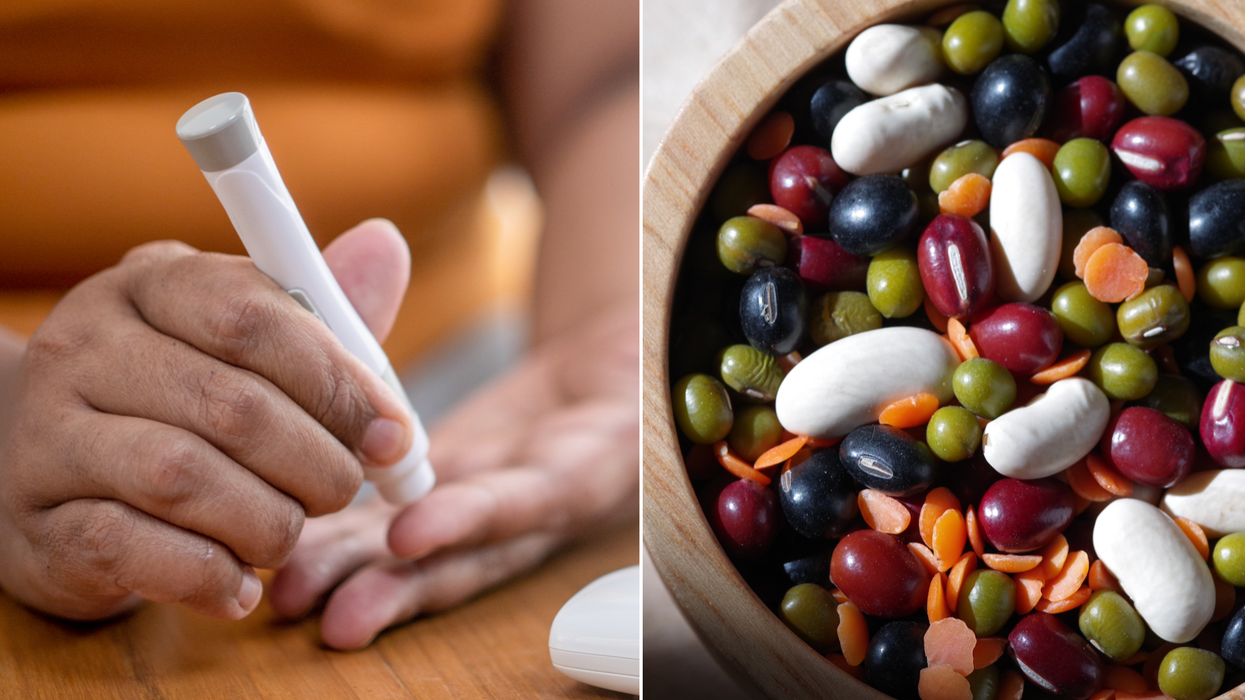Four 'powerhouse' pulses found to lower blood sugar levels and 'bad' cholesterol in thirty studies

Beans, peas, lentils and chickpeas found to fight type 2 diabetes and other cardiovascular biomarkers
|Getty Images

The sweeping review highlights the "potential role of pulses in maintaining health and preventing chronic disease", the study author says
Don't Miss
Most Read
Pulses have been shown to deliver a decisive blow to diabetes and 'bad' cholesterol.
The finding is hugely encouraging as diabetes rates are exploding - estimates published in The Lancet last year indicate that more than 1.31 billion people could be living with diabetes by 2050 worldwide.
The picture is no less rosy for high cholesterol; it's estimated that close to half of adults in the UK are living with cholesterol levels above national guidelines.
A newly published review in Nutrients suggests chomping down on pulses could help turn these sorry statistics around.
Researchers found consistent evidence that beans, peas, lentils and chickpeas help fight type 2 diabetes and other cardiovascular biomarkers, such as LDL cholesterol and HDL cholesterol.

Research has shown that eating pulses can help prevent heart disease
|Getty Images
Researchers aimed to examine the amount and types of evidence available around how pulses contribute to overall human health.
They identified thirty articles that studied lentils, chickpeas, common bean varieties (e.g., pinto, black, navy, red, kidney), black-eyed peas, cowpeas and split peas.
The health outcomes in these studies were multifaceted, ranging from lipid profiles to blood pressure, cardiovascular disease risk and mortality, type 2 diabetes and glycaemic control, metabolic syndrome indicators, inflammatory markers, oxidative stress biomarkers, and hormonal profiles.
The most frequently assessed study outcomes included changes in low-density lipoprotein cholesterol, high-density lipoprotein cholesterol, systolic blood pressure, diastolic blood pressure, fasting blood sugar, haemoglobin A1c, waist circumference, and C-reactive protein or high-sensitivity C-reactive protein.
Interventional studies, which have the largest sample sizes for examining lipid profiles, corroborate the beneficial effects of pulses on key cardiovascular biomarkers, such as LDL cholesterol and HDL cholesterol. Interventions where pulses either replaced red meat or were added as fixed servings demonstrated pulses’ efficacy in dietary quality enhancement and favourable health outcomes.
Research has shown that eating pulses can help prevent heart disease, attributed in part to the lowering effect of adequate pulse consumption on both total and LDL-cholesterol levels.
As the authors of the new review note, pulses’ low-fat content and presence of healthy mono- and polyunsaturated fats, along with a spectrum of essential micronutrients and bioactive compounds with antioxidant properties, further establish pulses as a |nutritional powerhouse".
Studies that follow groups of people over time demonstrate a reduction in type 2 diabetes risk with increased pulse consumption.
LATEST DEVELOPMENTS

Studies demonstrate a reduction in type 2 diabetes risk with increased pulse consumption.
| GETTYThis is further supported by interventional studies that consistently document improvements in fasting glucose levels and insulin sensitivity when pulses are incorporated into diets.
Eating pulses may help with the prevention of diabetes and the management of blood glucose levels.
Research shows that eating pulses can help manage blood glucose/improve glycaemic control by improving insulin sensitivity and lowering blood sugar.
“This research accentuates the fact that pulses are beneficial for health in so many ways, underscoring dietary guidelines that endorse plant-based eating patterns,” said Tim McGreevy, CEO, of USA Pulses, who was not involved the study.
Type 2 diabetes - symptoms to spot
Many people have type 2 diabetes without realising. This is because they may not always notice any symptoms.
Symptoms of type 2 diabetes can include:
- Peeing more than usual
- Feeling thirsty all the time
- Feeling very tired
- Losing weight without trying to
- Itching around your penis or vagina, or repeatedly getting thrush
- Cuts or wounds taking longer to heal
- Blurred vision










